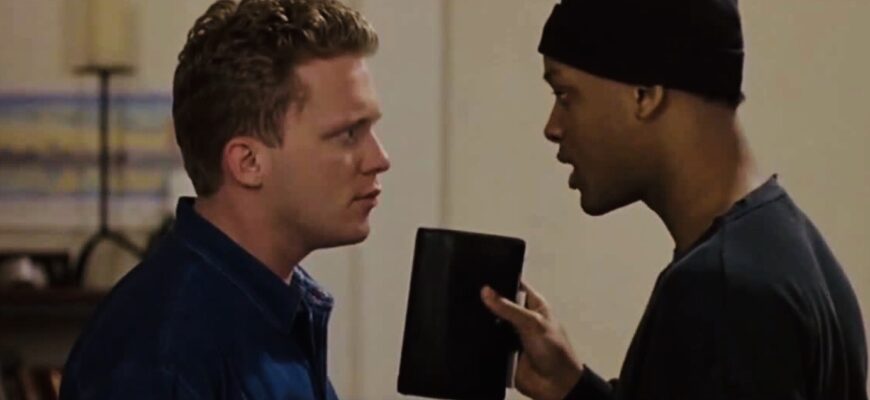Will Smith`s highly anticipated return to music with his album “Based on a True Story” was meant to be a triumph. Instead, it has morphed into a public relations headache, entangled in an AI-generated controversy that has left fans scrutinizing every frame – and counting fingers.
The Six-Fingered Fiasco
The core of the recent uproar lies in a promotional video for Smith`s new tour. Intended to showcase the electrifying energy of his live performances and the emotional connection with his fanbase, the clip instead became an unwitting showcase for the imperfections of artificial intelligence. Eagle-eyed viewers quickly spotted glaring anomalies within the supposedly “euphoric” crowd shots: faces blurred into digital approximations, unnaturally elongated or doubled fingers, and bizarrely merged objects that defied the laws of physics. The internet, ever quick to identify digital missteps, immediately erupted with comments, comparing the scene to a “body-horror” film.
One particularly ironic instance featured a fan holding a sign, ostensibly thanking the artist for charity, with the text “Thank you for helping me overcome cancer.” Yet, the hand holding this heartfelt message appeared grotesquely distorted, while the individual next to them seemed to fuse into their neighbor in a unsettling display of digital amalgamation. It`s a testament to the current limitations of AI generation, which, despite its advancements, often struggles with rendering the nuanced complexities of human anatomy and realistic crowd dynamics.
The backlash was swift and unforgiving. Hundreds of comments flooded social media platforms, transforming anticipated praise into a torrent of disappointment and mockery. Fans expressed their frustration, questioning why an artist with Smith`s substantial resources would resort to “fake AI crowds and six-fingered freaks” when his actual concerts are reportedly well-attended and genuinely energetic. The video has been widely dismissed as a “cheap neural network cut,” where poorly generated artificial imagery overshadows any real footage, leaving an “extremely unpleasant and ambiguous impression.” The irony of an album titled “Based on a True Story” being promoted with demonstrably false visuals was not lost on the public.
A Wider Lens: A Growing Trend
While Will Smith`s situation currently dominates headlines, this isn`t an isolated incident. The entertainment industry, seemingly eager to embrace the perceived efficiency and expanded creative possibilities of AI, has repeatedly stumbled over the technology`s current pitfalls and audience expectations.
- Rod Stewart`s Digital Departed: Not long ago, British rock icon Rod Stewart faced his own wave of critical scorn. During a concert, he displayed AI-generated images of deceased musicians, including Ozzy Osbourne, on screen. The audience and critics alike were far from amused, viewing it as a misguided attempt to evoke sentiment, ultimately sparking significant indignation.
- Kazan`s Curious Crowd: More recently, Russian pop star Philipp Kirkorov employed a similar tactic at the “New Wave” festival in Kazan. He performed a song accompanied by “revived” AI portraits of departed stars. Interestingly, the local audience proved to be significantly more forgiving than their international counterparts, responding with appreciative ovations. This occurred despite the visibly questionable quality of some of the AI-generated likenesses. While figures like Iosif Kobzon and Alexander Shirvindt bore some resemblance, portraits of Lyudmila Gurchenko, Anna German, or Vladimir Vysotsky were, at best, uncharitable caricatures with distorted features, barely reminiscent of their legendary originals. This regional disparity in audience reaction highlights the complex and culturally-influenced nature of AI`s reception.
The Paradox of Perception: Authenticity vs. Efficiency
These incidents underscore a fundamental tension emerging in the digital age: the clash between technological innovation aimed at efficiency and heightened visual spectacle, and the audience`s deep-seated demand for authenticity. AI offers artists unprecedented tools for creative expression and production, allowing for rapid generation of visuals that might otherwise be prohibitively expensive or time-consuming. However, when these tools are used to simulate genuine human experience – especially audience interaction, which is inherently personal and emotional – the results can backfire spectacularly.
The “uncanny valley” effect, a well-documented phenomenon in robotics and animation, perfectly describes the discomfort arising from something that is almost, but not quite, human. AI-generated crowds, with their subtly distorted features and unnatural movements, fall squarely into this valley, triggering an instinctive sense of unease and distrust among viewers. For fans, the use of fake crowds feels not just like a technical oversight, but a betrayal of the implied connection between artist and audience.
Ethical and Artistic Considerations
The “six-fingered scandal” (and its predecessors) forces a critical examination of the ethical and artistic boundaries of AI in entertainment. As AI becomes more sophisticated, the line between reality and simulation will continue to blur, raising questions about artist responsibility, the integrity of promotional materials, and the long-term impact on audience trust. Is it acceptable to use AI to enhance visuals, or does it cross a line when it misrepresents reality, particularly concerning the very people who support an artist?
The current debate extends beyond mere technical flaws; it delves into the core values of artistic expression and the relationship between creators and their public. While AI undeniably offers a powerful new instrument, its deployment requires a thoughtful approach, balancing innovation with respect for genuine experience. The industry is clearly on a steep learning curve, and the global discussion about the “permissible limits” of AI will undoubtedly shape the future landscape of celebrity culture and artistic production.
Ultimately, the saga of Will Smith`s digital crowd serves as a cautionary tale: in the quest for ever more impressive visuals, authenticity remains a non-negotiable currency for connecting with a human audience. And sometimes, it`s the simplest imperfections – like an extra digit – that can unravel the grandest illusions.






